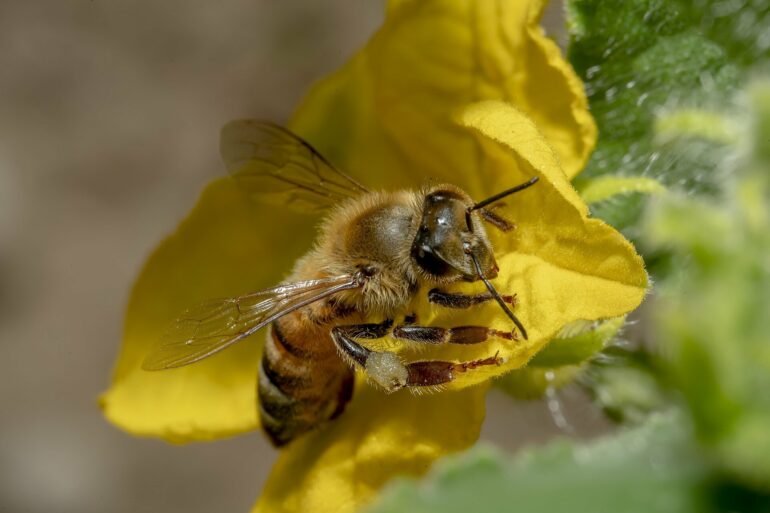At a tranquil nature reserve in South Michigan, an Agricultural Research Service (ARS) scientist and her collaborators connected olden wild bee sample collections and modern technology to better decode the ecological traits and habits of pollinators, critical links to environmental stability.
Kelsey Graham, an ARS Pollinating Insect Research Unit scientist, co-led the collaborative, intensive wild bee study at the University of Michigan’s E.S. George Reserve with a sampling period covering 1921 to 2018, which in tandem with advanced computer analyses, revealed long-term bee population trends that may hold the keys to new and enhanced conservation approaches.
“These studies point to clear indicators of an urgent need for diligent and consistent conservation efforts to protect bee diversity, which is crucial for our ecosystem health, human health and agricultural productivity,” Graham said.
In a recent publication of Proceedings of the Royal Society B, Graham’s research article “A century of wild bee sampling: historical data and neural network analysis reveal ecological traits associated with species loss,” explains how the study reached inflection points along the way, finding alarming declines in species richness, evenness and overall bee community diversity. Researchers also found that 64% of the more common bee species exhibited a more than 30% decline in abundance.
“In 1972 and 1973, the late zoologist Francis C. Evans detected 135 bee species, compared to our recent surveys in 2017 and 2018, which recorded only 90 species, with just 58 species present in both sampling periods,” Graham noted. “These samplings indicate a substantial shift in the bee community composition.”
To better understand why some species disappeared from the preserve, the ARS team and its partners leveraged neural networks, which determined that certain types of bees were more likely to vanish. Specifically, researchers discovered that oligolectic ground-nesting bees (meaning, bees that collect pollen from a few types of plants and nest in the ground) and kleptoparasitic bees (who steal food from other bees) are most vulnerable.
In comparison, the study found polylectic cavity-nesting bees (or bees that collect pollen from various plants and nest in cavities) are more likely to remain at the preserve.
Similarly, the findings demonstrated that bees active for longer periods each year have a better chance of remaining in the community if they collect pollen from a variety of plants.
In short, bees with certain traits, such as being picky about food, will continue to struggle compared to their more flexible counterparts.
Scientists also noted the significance of climate response, as bee species in the contemporary sampling period had a more southerly overall distribution compared to the historic community, indicating communities are shifting in response to warming temperatures.
This study, Graham explained, exhibits the utility and importance of publicly available historical long-term data in deciphering complex indicators of bee population trajectories, findings that may have otherwise been obscured in a lesser scope and timeframe.
“Combining traditional analysis techniques with neural networks helped us reveal shifts in geographic ranges and declines in bee abundance and diversity as they relate to species traits,” Graham said. “Such analyses help our understanding of bee population trends to inform the science and practice of bee conservation.”
More information:
Kelsey K. Graham et al, A century of wild bee sampling: historical data and neural network analysis reveal ecological traits associated with species loss, Proceedings of the Royal Society B: Biological Sciences (2024). DOI: 10.1098/rspb.2023.2837
Provided by
Agricultural Research Service
Citation:
Vintage museum collection and modern research intersect in century-long bee study (2024, September 25)



